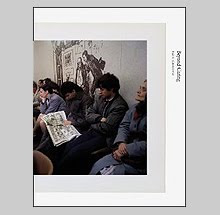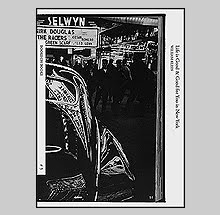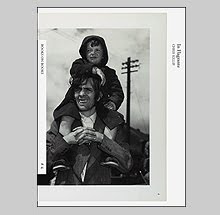Living With War & Protest The War by Judith Joy Ross
Dick Cheney: On the security front, I think there's a general consensus that we've made major progress, that the surge has worked. That's been a major success.
Martha Raddatz: Two-third of Americans say it's not worth fighting.
Dick Cheney: So?
Martha Raddatz: So? You don't care what the American people think?
Dick Cheney: No. I think you cannot be blown off course by the fluctuations in the public opinion polls.
Does it seem like as we try to pour democracy into
Ross’s portraiture has dealt with the aftermath of war before with her series of images made at the
As many of you have figured out by now (or think you have figured out) one of my main criteria for work is my ability to return to it with sustained interest and enjoy what I see as the photographer’s prowess in making the individual image. Well, these two books -- the larger of which contains 85 photographs -- are examples of just that. Most of these photographs are portraits of people taken from the mid-section up and there is a dangerous amount of similarity from one to the next. These are not remarkably different images in terms of their basic construction but what each has in terms of small visual clues that Ross masterfully draws out arrests my attention with each page. These are not books that I am capable of just flipping through. Much like what August Sander was capable of doing even with the exhausting amount of work and similarity of subject, Ross makes each an individual that can stand amongst others but they do not blend with the crowd.
Living With War opens with the Vietnam Memorial Wall photographs and follows with a series of portraits of young veterans from the first Gulf War in 1991. The last section is a series of war protesters from the latest debacle. Resolute and steadfast, these demonstrators stand with conviction that is tinged with slight powerlessness. They stand on the right side of reason but know that all of the power they attempt to pack into a cardboard sign can too easily be dismissed by those that drive the war. These photos are driven by an inner wish to regain control in an atmosphere where our own democracy and government seem like foreign invaders.
Protest The War is a small booklet of 22 images beautifully printed to reflect Ross’s use of printing out paper for her final prints. (I had heard that she went to
Living With War is as beautifully printed and this large format book is sure to wind up on one of my best of lists for the year.
My form of protest is often wound up in violent fantasy that would play right into the hands of the opposition if realized -- thus accomplishing nothing. This book is a more mature and powerful form of civil disobedience. Someone should force Bush and President Cheney to stare at these portraits. Maybe that would appeal to their inner human being. And if all they can understand is violence then perhaps gripping the book in both hands and bringing it down on the bridge of their noses might work better. Either way works for me.
Buy Living with War at Steidlville
Buy Protest the War at Steidlville












